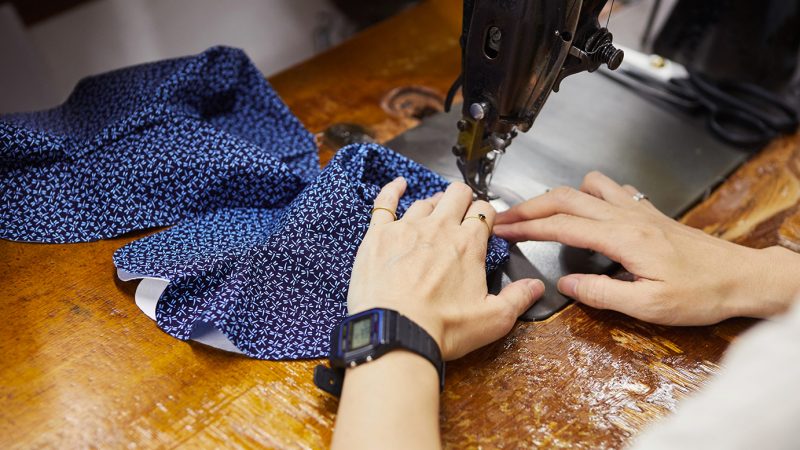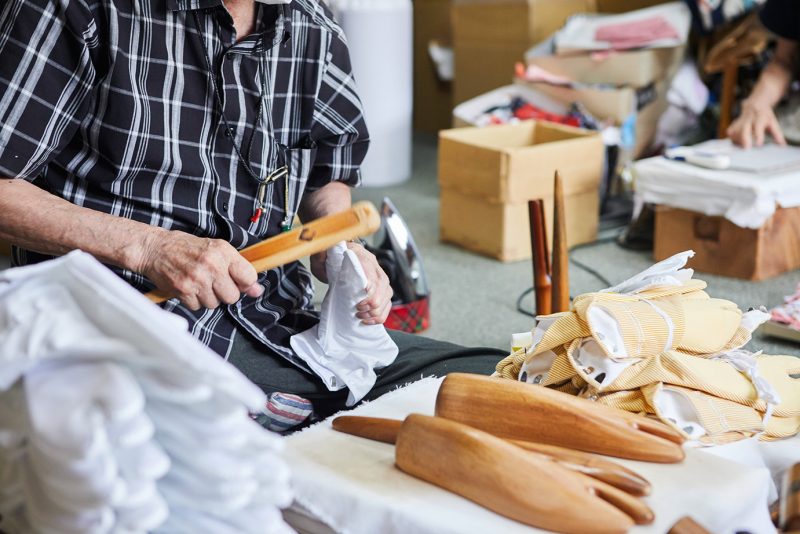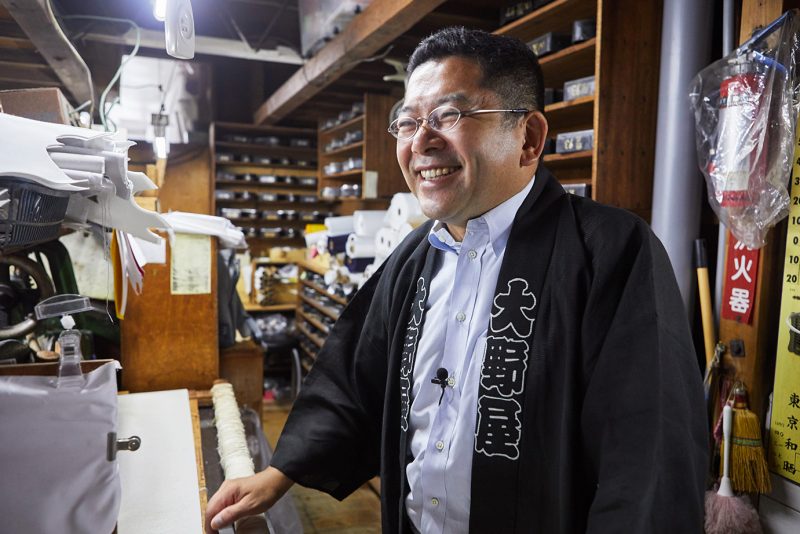
A wide variety of Tabi Shoes that have been and is still changing
‘Ohnoya sohonten’ Tabi shoes are long loved by Kabuki actors, dancers, and other people from the entertainment industry, and are able to be purchased by non-professional customers. "They are often purchased when people wear kimonos for coming-of-age ceremonies or for lessons such as tea ceremonies. I hope that by experiencing Japanese culture such as the tea ceremony and flower arrangement, they will have the opportunity to encounter kimono and tabi at the same time.”

When thinking of Tabi Shoes, we usually think of the basic white Tabi Shoes, but in fact, there have always been a wide variety of Tabi Shoes with different colors and patterns. “In Kabuki plays, various colors are used to match the costumes, such as yellow, green, red, and wisteria. Depending on the actor, a darker color may be used, or a decorative cord may be attached to make it look like a string tabi.”

“When Tabi Shoes first came to Japan from China, they were called "Shito-uzu", which had round tips and no separate toes and were fastened with strings. Even today, in plays set in the Heian period (794-1185), there is a scene where people tie their tabi socks when they leave for a journey.”

Tabi Shoes have changed their shape within times. Ohnoya also makes socks with rubber heels. “I think people can easily use them like slippers even when they are wearing Western clothes. But our main focus is on Tabi Shoes which matches the Japanese clothes. We have many customers who come to buy good Tabi Shoes, so we will keep making products that will satisfy them.” With an unchanging focus in the midst of change, he will continue to maintain the tradition of Tabi Shoes.

